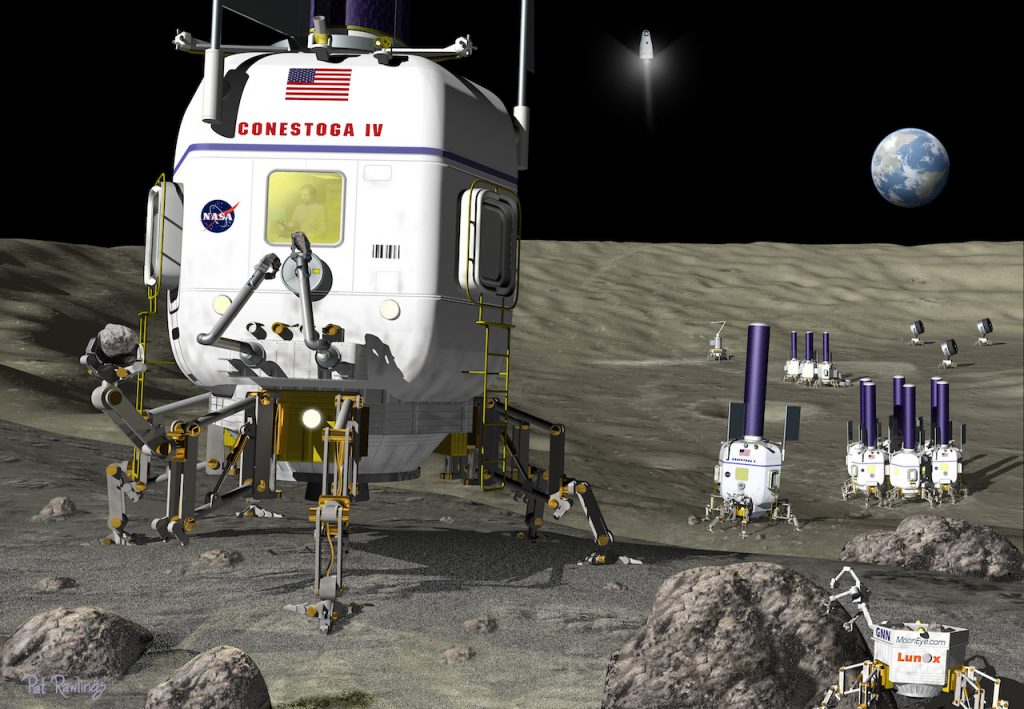The centre, based in Luxembourg, is also expected to contribute to economic growth by supporting commercial initiatives and start-ups, offering a business incubation component and enabling technology transfer between space and non-space industries.
The European Space Resources Innovation Centre (ESRIC) will focus on laying the foundations for exploiting extra-terrestrial resources and promoting technology transfer between space and non-space industries.
The tiny European nation is one of the euro zone’s wealthiest countries and already has a long-standing space industry, playing a significant role in the development of satellite communications.
While its drive to become a significant actor in the asteroid mining industry is only four-years old, the country has already taken major steps towards achieving that goal.
In June 2016, Luxembourg agreed to buy a major stake in US-based asteroid miner Planetary Resources.
The country also announced the opening of a €200 million ($225 million) line of credit for entrepreneurial space companies to set up their European headquarters within its borders.
Previously, the government had reached an agreement with another US-based company, Deep Space Industries, to send missions to prospect for water and minerals in outer space. Both parties are currently developing Prospector-X, a small and experimental spacecraft that tests technologies for prospecting and mining near Earth asteroids from 2021.
Luxembourg hasn’t stopped there. In 2018, it created its own Space Agency (LSA) to boost exploration and commercial utilization of resources from Near Earth Objects.
Legal frame
Luxembourg’s administration has also set up a legal frame for exploiting space resources. The law, passed in 2017, says private companies can be entitled to the resources they mine in outer space, but they can’t own celestial bodies.
The only international legal body available until then dated back to 1967. The Outer Space Treaty, signed by the US, Russia and a number of other countries, says that nations can’t occupy nor own territory in space.
“Outer space shall be free for exploration and use by all States,” the treaty says, adding that “outer space is not subject to national appropriation by claim of sovereignty, by means of use or occupation, or by any other means.”
The United States has also been working on setting its own rules. Former President Barack Obama signed in 2015 a law granting American citizens rights to own resources mined in space.
The ground-breaking rule was touted as a major boost to asteroid mining because it encouraged the commercial exploration and utilization of resources from asteroids obtained by US firms.
Such law included a very important clause, clarifying that US citizens were not granted “sovereignty or sovereign or exclusive rights or jurisdiction over, or the ownership of, any celestial body.”
Order to mine
President Donald Trump signed an order in April encouraging citizens to mine the Moon, stars and other planets with commercial purposes.
The directive classifies outer space as a “legally and physically unique domain of human activity” instead of a “global commons,” paving the way for mining the moon without any sort of international treaty.
“Americans should have the right to engage in commercial exploration, recovery, and use of resources in outer space,” the document states, noting that the US had never signed a 1979 accord known as the Moon Treaty. This agreement stipulates that any activities in space should conform to international law.
Russia’s space agency Roscosmos quickly condemned Trump’s move, likening it to colonialism.
“There have already been examples in history when one country decided to start seizing territories in its interest — everyone remembers what came of it,” Roscosmos’ deputy general director for international cooperation, Sergey Saveliev, said in May.
Russia has been pursuing plans in recent years to return to the moon, potentially travelling further into outer space.
The government revealed in 2018 it planned to establish a long-term base on the moon over the next two decades, while President Vladimir Putin has vowed to launch a mission to Mars “very soon.”
NASA’s global legal framework for mining on the moon, called the Artemis Accords, would be the latest effort to attract allies to the agency’s plan to place humans and space stations on the celestial body within the next decade.

It also lines-up with several public and private initiatives to fulfill the goal of extracting resources from asteroids, the moon and even other planets.
Trump has taken a consistent interest in asserting American power beyond Earth, forming the Space Force within the US military last year to conduct space warfare.
NASA recently put out a call soliciting bids from explorers anywhere on Earth who are willing to finance their own trips to the moon and collect soil or rock samples without actually returning the material to earth. The effort is meant to set a legal precedent for mining on the lunar surface that would allow NASA to one day collect materials useful to colonies on the moon and, eventually, other planets.
The agency hopes to start mining the Moon as early as 2025, especially after finding evidence that the Earth’s natural satellite may, underneath its surface, be richer in metals than previously thought.
Geologists have long highlighted the mineral value of asteroids. They say the heavenly bodies are packed with iron ore, nickel and precious metals at much higher concentrations than those found on earth, making up a market valued in the trillions of dollars.




